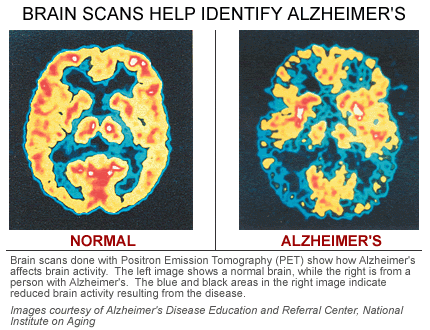As we’ve discussed previously, we are seeking to detect Alzheimer’s as soon as possible- before the amyloid proteins (plaque) form in the brain (with the concomitant brain cell death). Now, instead of a spinal tap (to test the spinal fluid), there may be a blood test (easier to complete).

Now, in the Archives of Neurology, Dr. Sid O’Bryant of the Texas Alzheimer’s Research Consortium, published the second of two studies. The first study, published in June, was aimed at determining if Alzheimer’s patients could be accurately determined. The second study, in the September issue, described the results involved in ruling out subjects NOT at risk for Alzheimer’s.
Basically Dr. O’Bryant’s group examined the presence of about 100 proteins to determine if patients possess APOE4 (Apolipoprotein E4), a gene associated with the development of Alzheimer’s disease. Once the protein analyses were complete, a computer determines the risk the patient possesses.
O’Bryant reported that positive results (finding patients with Alzheimer’s Diseases) were 94% accurate. In addition, there was an accuracy of 84% in defining subjects not at risk. Now, the researchers are examining if they can predict who will be subject to Alzheimer’s- which the spinal tap does achieve.
In the next issue (online first now), Dr. Geldmacher and colleagues at the University of Virginia, described their studies that examined the effects of pioglitazone (PGZ) on the brains of patients with Alzheimer’s. This drug (Takeda Pharmaceuticals, ‘Actos’) is known to activate Peroxisome Proliferator Activated Receptor-gamma (PPARgamma) in patients with diabetes and laboratory studies demonstrated that drugs that bind to PPARgamma reduce inflammatory responses in microglia when amyloid peptides (plaques) are present.
Dr. Gelmacher’s group administered the drugs to 25 patients- some with Alzheimer’s and some with normal brain function. None of the patients suffered from diabetes. Those treated with the drug had improvements in cognition, activities of daily living, and neuropsychiatric symptoms.
Now, there are several early detection tests on the horizon, with a potential treatment that can be used in early treatment, before the plaques begin affecting the brain.







One thought on “Another early detection test for Alzheimer’s and a potential treatment”
Comments are closed.